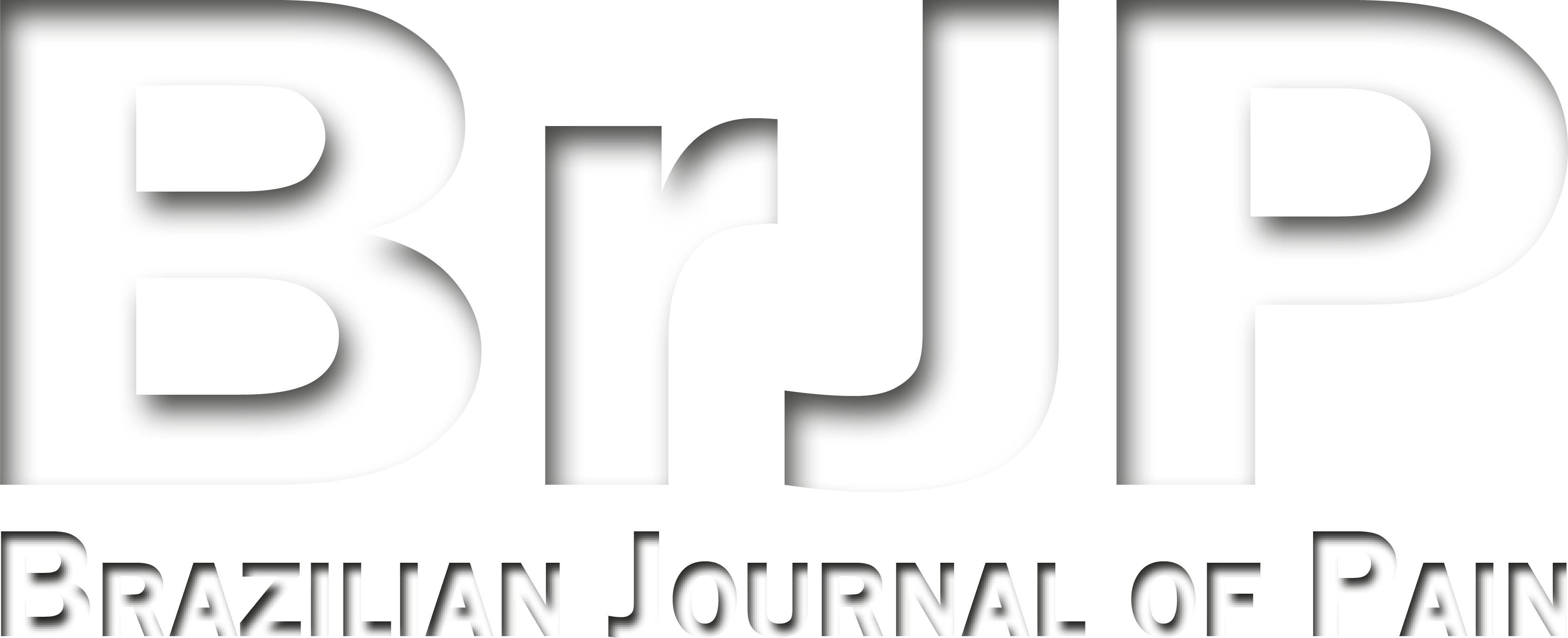Comparison of combined therapy with ultrasound-associated interferential current in healthy subjects
Comparação da terapia combinada com corrente interferencial associada ao ultrassom em indivíduos saudáveis
Bárbara Caroline Royer; Carla de Fátima Albuquerque; Cecília Felix da Silva; Gabriela Walker Zancanaro; Gustavo Kiyosen Nakayama; Gladson Ricardo Flor Bertolini
Abstract
Keywords
Resumo
Palavras-chave
Referências
Rocha CS, Lanferdini FJ, Kolberg C, Silva MF, Vaz MA, Partata WA. Interferential therapy effect on mechanical pain threshold and isometric torque after delayed onset muscle soreness induction in human hamstrings. J Sports Sci. 2012;30(8):733-42.
Baliki MN, Apkarian AV. Nociception, pain, negative moods, and behavior selection. Neuron. 2015;87(3):474-91.
Artioli DP, Bertolini GR. Corrente interferencial vetorial: aplicação, parâmetros e resultados. Rev Bras Clin Méd. 2012;10(1):51-6.
Shanahan C, Ward AR, Robertson VJ. Comparison of the analgesic efficacy of interferential therapy and transcutaneous electrical nerve stimulation. Physiotherapy. 2006;92(4):247-53.
Fuentes JP, Armijo Olivo S, Magee DJ, Gross DP. Effectiveness of interferential current therapy in the management of musculoskeletal pain: a systematic review and meta-analysis. Phys Ther. 2010;90(9):1219-38.
Warden SJ. A new direction for ultrasound therapy in sports medicine. Sport Med. 2003;33(2):95-107.
Wong RA, Schumann B, Townsend R, Phelps CA. A survey of therapeutic ultrasound use by physical therapists who are orthopaedic certified specialists. Phys Ther. 2007;87(8):986-94.
Ricci NA, Dias CN, Driusso P. The use of electrothermal and phototherapeutic methods for the treatment of fibromyalgia syndrome: a systematic review. Rev Bras Fisioter. 2010;14(1):1-9.
Aragão AC. Análise da atividade do sistema nervoso autônomo em pacientes com dor miofascial tratados com terapia combinada. 2008.
Guerra TE, Bertolini GR. Efeitos da variação da rampa de entrega do ?F sobre a acomodação da corrente interferencial em mulheres saudáveis. Rev Dor. 2012;13(1):25-9.
Silva DO, Spironello A, Andretta G, Broetto GS, Jaskowiak JL, Bertolini GR. Corrente interferencial no limiar de dor induzida à pressão e ao frio, nas frequências de 2 kHz, 4 kHz e 8 kHz. ConsSaude. 2015;14(2):222-8.
Sant'Ana EM. Fundamentação teórica para terapia combinada HECCUS - Ultrassom e Corrente Aussie no tratamento da lipodistrofia ginóide e da gordura localizada. Rev Bras Ciência Estética. 2010;1(1):1-15.
Schulz AP, Chao BC, Gazola F, Pereira GD, Nakanishi MK, Kunz RI. Transcutaneous electrical nerve stimulation action on pressure-induced pain threshold. Rev Dor. 2011;12(3):231-4.
Claro AO, Kanezawa BA, Camargo M, Paes VM, Portolez JL, Bertolini GR. Pressure and cold pain threshold in healthy subjects undergoing interferential current at different amplitude modulated frequencies. Rev Dor. 2014;15(3):178-81.
Oliveira P, Monteiro P, Coutinho M, Salvador MJ, Costa ME, Malcata A. Qualidade de vida e vivência da dor crônica nas doenças reumáticas. Acta Reum Port. 2009;34(3):511-9.
Fiori A, Cescon CL, Galesky JD, Santos TA, Brancalhão RM, Bertolini GR. Comparison between bipolar and tetrapolar of the interferential current in nociceptive threshold, accommodation and pleasantness in healthy individuals. Eur J Physiother. 2014;16(4):201-5.
Bruning MC, Silva DP, Anguera MG, BErtolini GR. Ultrassom terapêutico no tratamento da lesão muscular: revisão sistemática. Rev Pesqui Fisioter. 2016;6(4):455-61.
Ahmadi F, McLoughlin IV, Chauhan S, ter-Haar G. Bio-effects and safety of low-intensity, low-frequency ultrasonic exposure. Prog Biophys Mol Biol. 2012;108(3):119-38.
ter Haar G. Ultrasound bio-effects and safety considerations. Front Neurol Neurosci. 2015;36:23-30.
Martignano CC, Silva LI, Meireles A, Rocha BP, Rosa CT, Bertollini GR. Avaliação do ultrassom sobre a hiperalgesia e o edema em joelhos de rato Wistar e interferências de um inibidor de opioides endógenos. Fisioter Bras. 2013;14(4):289-93.
Almeida TF, Roizenblatt S, Benedito-Silva AA, Tufik S. The effect of combined therapy (ultrasound and interferential current) on pain and sleep in fibromyalgia. Pain. 2003;104(3):665-72.
Moretti FA, Marcondes FB, Provenza JR, Fukuda TY, Vasconcelos RA, Roizenblatt S. Combined therapy (ultrasound and interferential current) in patients with fibromyalgia: once or twice in a week?. Physiother Res Int. 2012;17(3):142-9.
Submetido em:
30/11/2017
Aceito em:
07/02/2018


